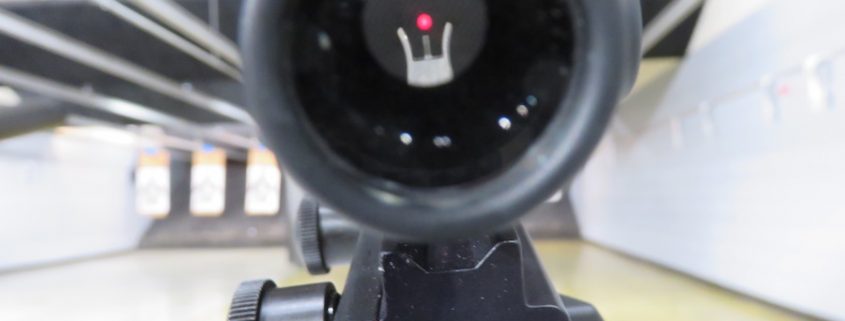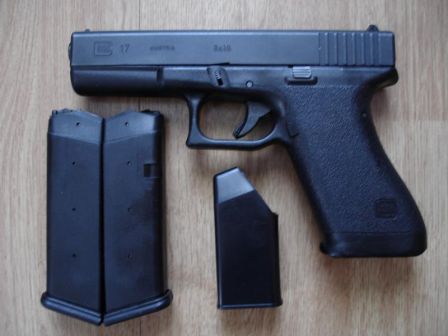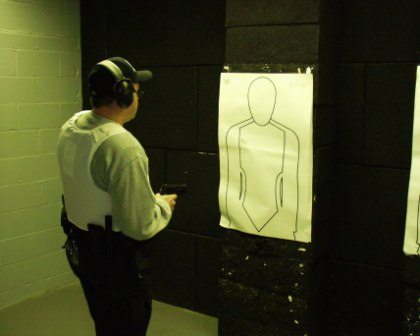Police officers are not trained to shoot to kill, nor do they shoot to wound. That, my friends, is the answer to the question. And NO, police officers do not fire warning shots into the air. Why not? Because there’s way of knowing where that round will land. Remember, what (a bullet)goes up must come down, and when it does it could strike an unsuspecting person, such as an innocent child enjoying a day at the local playground.
While we’re at it, lets address the questions and statements we all see time and time again during the aftermath of police-involved shootings—“Why didn’t he shoot the gun/knife from the bad guy’s hand?”
Or, “Shoot ’em in the knee. That’ll drop the guy like a lead balloon.”
And the ever popular, “I wish I’d have been there ’cause I’da shot the murderer in his gun hand. Then the crook couldn’t have shot anybody else and he’d still be alive to complete his dream of becoming a minister AND director of puppy petting at the local Ima Good Boy Charity and Feed the Homeless Sea Urchin Center.”
Police officers are trained to stop a threat to human life.
U.S. police officers are not soldiers and criminals are not enemy combatants. Contrary to the belief of some people, U.S. streets are not battlefields where cops shoot first and ask questions later. It cannot and does not work that way.
In a perfect world there would be no crime and we’d all be safe, all the time. But our world is FAR from perfect; therefore, cops are tasked with arresting those who break the law. Unfortunately, some bad guys choose to not be arrested and will do whatever it takes to remain free, including trying to kill police officers. They may also choose to seriously harm or kill others during the commission of their crime(s). These two scenarios force officers to resort to deadly force to stop the threat to the lives of others, and to themselves.
Back to the earlier statements—police officers are not taught to kill anyone, nor are they taught to “wound” anyone. Officers do not aim for hands, feet, knees, firearms, knives, etc. Instead, during a deadly force confrontation—when lives are at stake—officers are taught to shoot center mass, meaning the center of their intended target. If all they see is the suspect’s head, then that is their target. If they see the entire body they then aim for its center (center mass).
Why aim for center mass? Common sense answer—because it is the largest available target, which makes it the easiest area to hit when under extreme duress during an incident that sometimes happens within a fraction of a second.
The reason behind not shooting to wound is pretty simple, actually, and here’s why. Most police officers are not skilled award-winning sharpshooters. Not even close. To expect them, or anyone, to hit a fast-moving target, such as an arm or leg, while under duress, is unrealistic. Hands and arms can move across the body as quickly as 12/100th of a second. From hip to shoulder in 18/100th of a second. The time it takes a police officer to pull the trigger on one of the faster reacting trigger pulls, that of the Glock, is a slow 1/4 of a second. And that’s if the officer has already drawn his/her sidearm and has it pointed at the suspect.
Glock 17
It’s nothing short of impossible for an officer to see the threat, react appropriately, unsnap the holster, perform the required series of motions to free her weapon from the security holster (I’ll bet many of you didn’t know there was a combination/series of actions required to remove an officer’s pistol from a security-type holster), think about what she’s doing, decide whether or not the threat is real and, if so, pull the trigger. Oh yeah, she’d also have to take time to aim for the arm, hand, or leg. Impossible. No way. No how. Can’t and won’t happen, not even on her/his best day.
Another point to remember regarding how quickly shooting situations unfold—in many, many instances, there is not a single portion of a second to spare, including enough time to shout, “Drop your weapon!” Or even to yell, “Stop!”
To give you an idea as to how quickly a shooting can occur…
Then there’s this. Suppose the officer somehow manages to hit the suspect’s arm, or hand, or foot? Well, that leaves the suspect’s free hand to continue his attempt to kill the officer or other potential target, such as a wife, husband, a bank teller, a child, and, well, you get the idea. Wounding someone, hoping that’ll stop them from killing is stuff you see on TV. It’s just not that way in real life situations.
I’ve seen bad guys continue shooting or stabbing after being struck by several rounds. Actually, I was in a shooting situation where the bad guy continued to shoot after being shot in the head once and in the center of his chest four times, and after all that he still got up and ran several yards. I was there. I saw it with my own eyes. In fact, I was the detective who shot him. I was also the detective who ran him down and tackled him. So being wounded, even severely wounded, does not necessarily stop a threat to human life.
Now, back to shooting to kill. I’m not aware of any police agency in the U.S. that teaches/trains officers to kill. Not one. Besides, how many sane people would sign on with an agency if they were told they must kill people as part of their daily duties—write speeding ticket, respond to kids playing in traffic, kill the guy standing in front of the Piggly Wiggly, go on lunch break.
During a shooting situation, officers typically do not have time to aim. Instead, they revert to their training—draw, point, and shoot for the center of the target.
Shootings involving police officers most often happen in a matter of seconds or less, and usually at very short distances—a mere few feet. In fact, these close-range situations occur so often that officers train quite a bit at shooting from short distances, without taking aim. They’re taught to draw and point their weapon at the center of the target, or as close as they can get to the center.
Again, even at greater distances, there’s still no time to stop, take a proper stance, draw a weapon, take careful aim, ask the offender to stand still so the officer won’t miss and hit an innocent bystander, and then fire. So officers shoot for center mass, the largest portion of the body they see. That’s it. Nothing more, and nothing less.
Keep this in mind. Rounds that strike center mass could certainly cause the death of the suspect, but death is not the intended outcome. The goal is to stop the threat. If a bad guy surrenders the moment he sees that the officer has drawn her weapon and fully intends to use it, the threat is then over and the officer must take the suspect into custody.
Stop the threat. That’s the intended outcome of the use of deadly force.
*As always, I’d love to hear your comments and questions, but please do not turn this into a debate on gun control, politics, race, or cop-bashing. Instead, let’s stick to the factual information in the article. Thanks!




